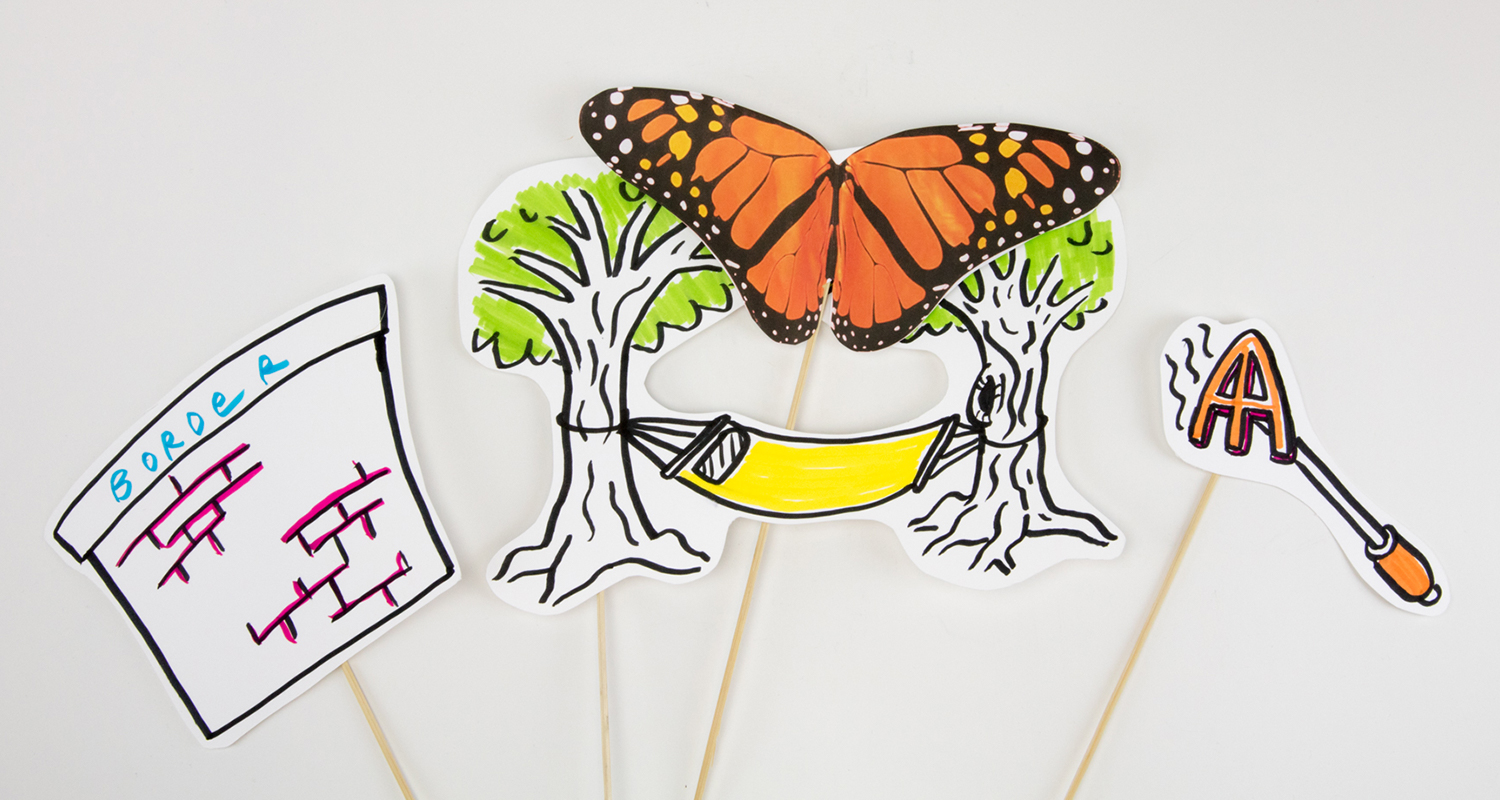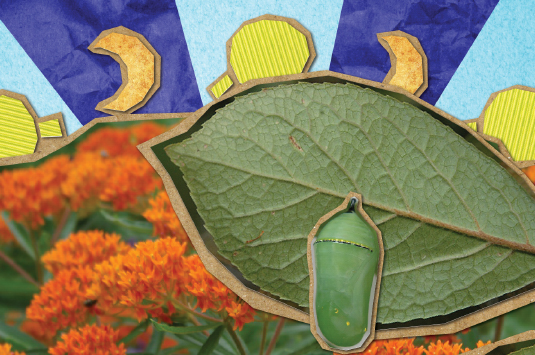Originally Completed: Feb. 2018
Medium: Adobe AfterEffects
Collaborators: David Corneail (Design, Foley), Kristin Koch (Voiceover)
PROCESS NOTES
FROM MICHIGAN TO MICHOACAN
This educational short follows the year-long journey of the monarch butterfly, as it travels all the way from the northmost reaches of the United States to the southern coast of Mexico.
The original prompt for the project was actually fairly broad — the only main criteria was that we were to create a short, educational film explaining some natural phenomena that occurs within the state of Michigan. Monarchs were one of the options that immediately stood out to us for their vibrant visual possibilities; when coupled with a subject matter as whimsical as butterflies, we immediately started leaning into the visuals and motifs used in children’s books and programming of the 90’s and early 2000’s
LIVE-ACTION STORYBOARDING
One of the goals of the project was to learn new methods of planning and storyboarding, and as a way of pushing this idea, we were asked to perform a live-action play of our storyboards before doing anything digital. Since the production value of creating a six-foot-tall butterfly costume seemed a bit high, we decided to take a less theatrical approach and do a puppet show instead.
We started by figuring out the basic elements we would need to create in order to make a puppet show work. One person would be visible, providing the narration, while the other hid behind a table, puppeteering our paper cutouts. It was thus necessary to limit the amount of puppets needed so that the puppeteer could keep pace with the narrator for the duration of the performance. We ended up creating a new set of storyboards specifically for the live-action performance, which helped us keep track of how many paper cut-outs we would need to create in order to make every scene work.

The cutouts themselves were incredibly simplistic, but using many of them in conjunction, we were able to tell a surprisingly complex narrative. The primitive drawings and semi-sloppy craftsmanship went perfectly with our children’s-book narration, and the whole presentation felt reminiscent of an actual elementary-school puppet show. The live-action performance ended up being so successful that we decided to keep the hand-crafted puppet format as the core aesthetic for the final piece.

DIGITAL PHYSICALITY
Following the success of the puppet show, we began working out how to translate the physical puppet format into a digital space. Our refined storyboards were heavily influenced by the work of Eric Carle, author of the children’s book, The Very Hungry Caterpillar. His illustration style involves cutting shapes out of painted paper and then collaging them together; to re-create this effect in a digital space, we found free stock images online, then sliced them up and used them to create our characters and backdrops.



Simply collaging digital photos together wasn’t enough to sell the papercraft aesthetic, however. In order to make the piece feel like it could really exist in a physical space, I added a number of tiny imperfections to each setpiece. While hardly noticeable on their own, these micro details went a long way towards enhancing the illusion that these were actual hand-made objects moving around on a makeshift stage.
